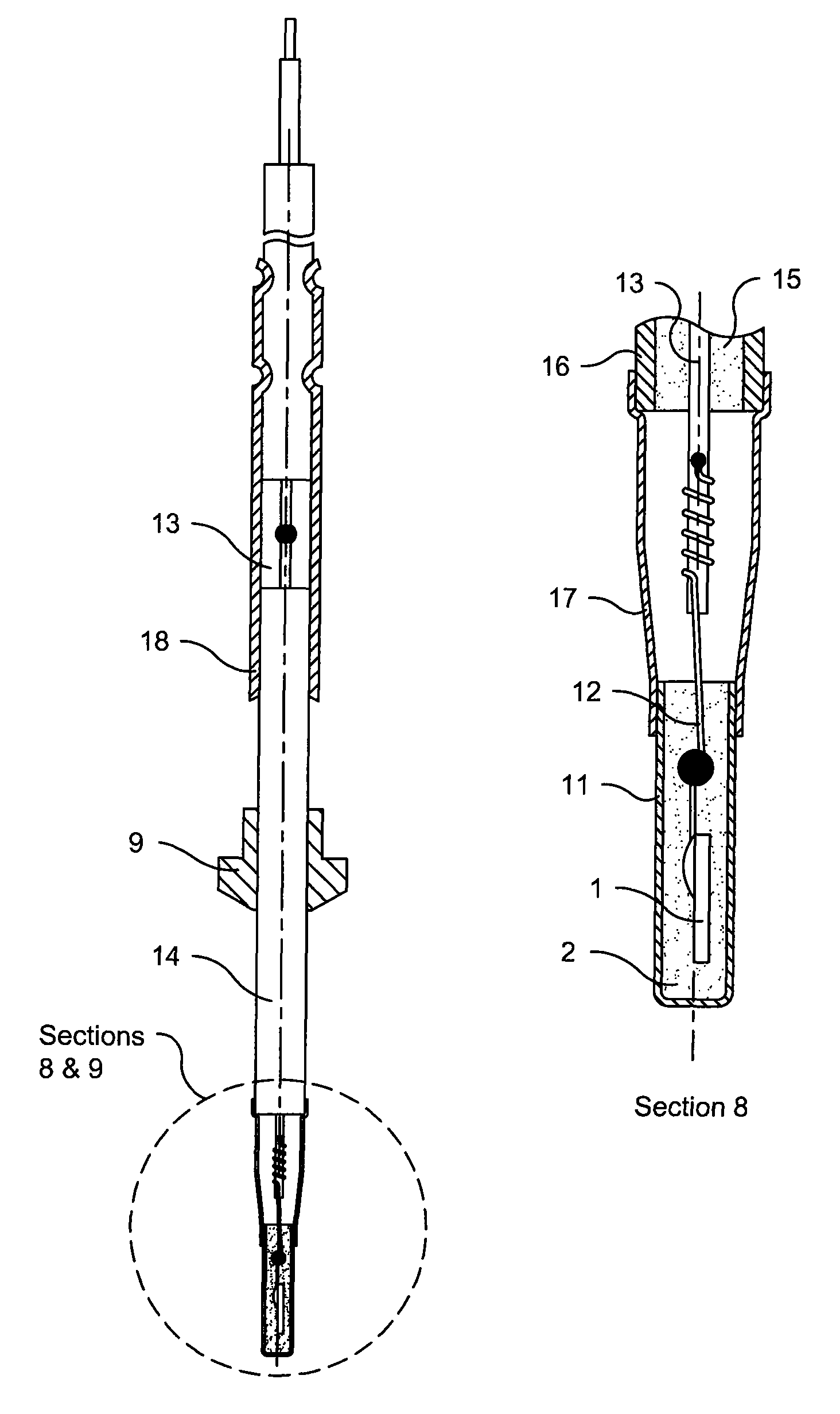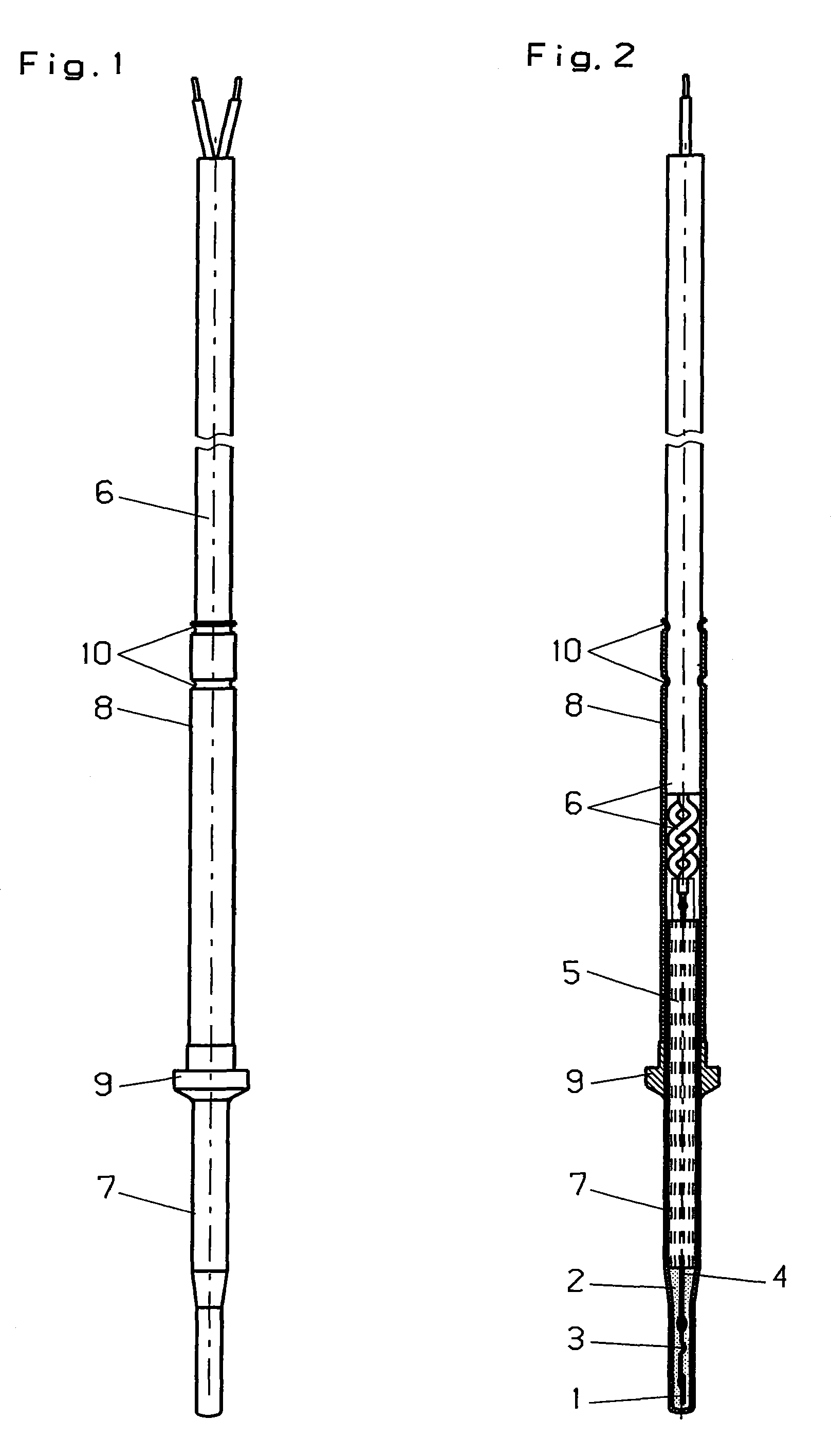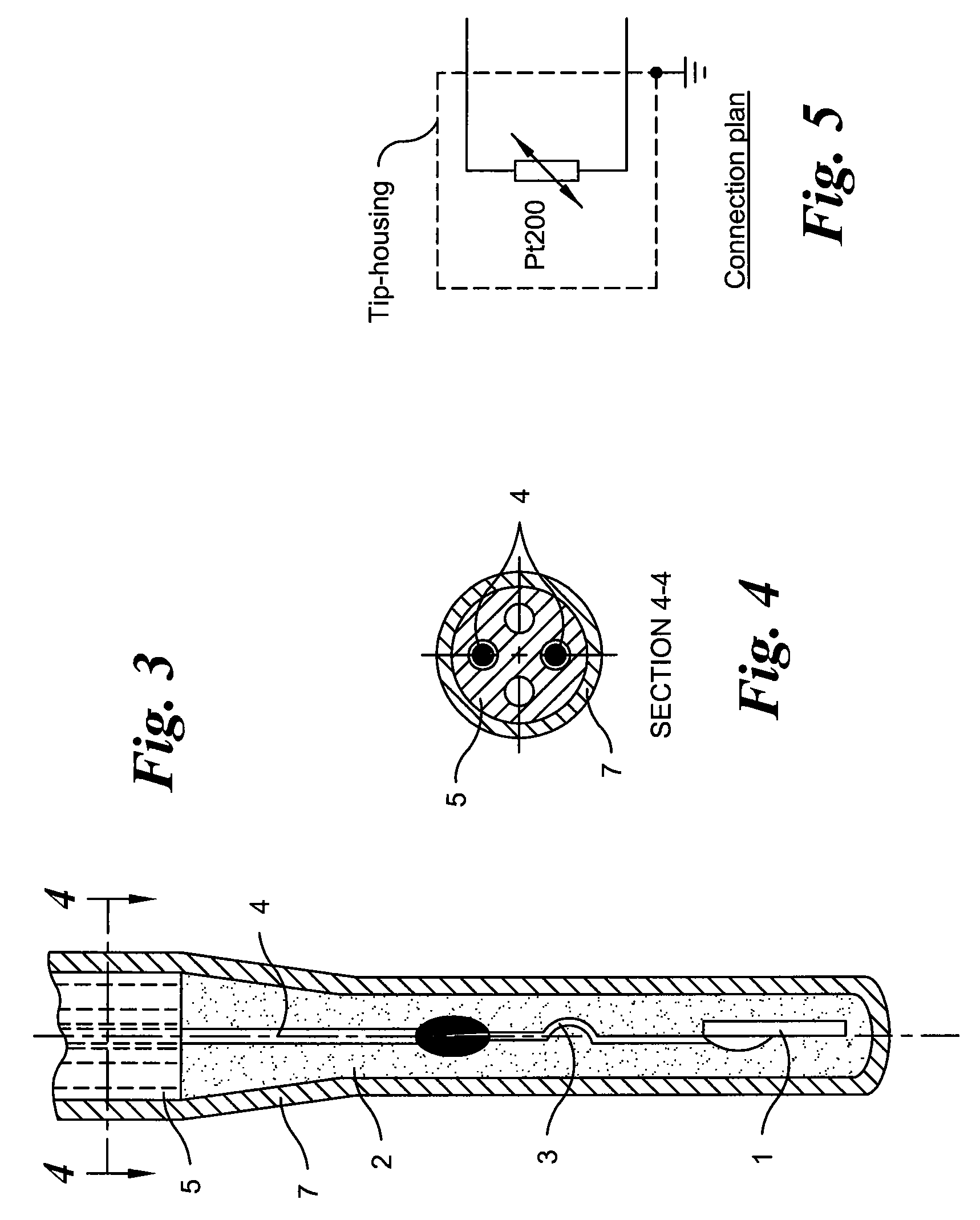Turbocharger protection device
a protection device and turbocharger technology, applied in the direction of machines/engines, instruments, heat measurement, etc., can solve the problems of turbocharger damage, deactivation, and high cost of electronic components for this purpose, and achieve the effect of reducing electronic costs and eliminating the risk of negative temperature characteristics
- Summary
- Abstract
- Description
- Claims
- Application Information
AI Technical Summary
Benefits of technology
Problems solved by technology
Method used
Image
Examples
example 1
[0028]Temperature sensor whose measurement tip can be adapted, particularly bent, according to the requirements of motor construction.
[0029]A high temperature sensor with flexible measurement tip has a bendable MI line according to FIG. 6 or 7, on which a measurement tip is arranged, which can be constructed according to FIG. 8 or 9. The film resistor 1 shown in FIG. 8 is connected with two bonding wires (only one shown in Figures) each to a spiral spring, which are each in turn mounted on a strand of an MI line and surround this line.
[0030]In this way, the connection between the measurement resistor chip and the supply-line cable is produced at least partially such that, between the measurement resistor and the supply-line cable, strands from a mineral-insulated supply line project out from the mineral insulation at the end facing the measurement resistor and are each connected electrically and mechanically to a spring, and the springs are each guided wound around the strands.
[0031...
example 2
[0037]With a chip 1 made of a platinum thin-film measurement resistor on a sapphire substrate, a high-temperature sensor element is created for a temperature range from −40° C. to 1200° C. The chip 1 is embedded in a casting compound 2 made of highly pure aluminum oxide and connected electrically with spring-shaped bonding wires 3 made of platinum to heat-decoupling wires 4 made of chromium steel having 70 wt. % iron, 25 wt. % chromium, and 5 wt. % aluminum (FIG. 4). The heat-decoupling wires 4 according to the invention are surrounded essentially by a capillary tube 5 made of aluminum oxide (FIG. 3). On its end opposite the chip 1, the heat-decoupling wires 4 are connected to spiral-shaped strands of the connection cable 6 (FIGS. 1 and 2).
[0038]The casting compound 2 is dosed and fired in a sleeve 7 made of chromium steel having 70 wt. % iron, 25 wt. % chromium, and 5 wt. % aluminum. The casting compound mass is thereby sintered and fixes the chip 1. This embodiment is suitable esp...
PUM
| Property | Measurement | Unit |
|---|---|---|
| temperature | aaaaa | aaaaa |
| temperature | aaaaa | aaaaa |
| temperature | aaaaa | aaaaa |
Abstract
Description
Claims
Application Information
 Login to View More
Login to View More - R&D
- Intellectual Property
- Life Sciences
- Materials
- Tech Scout
- Unparalleled Data Quality
- Higher Quality Content
- 60% Fewer Hallucinations
Browse by: Latest US Patents, China's latest patents, Technical Efficacy Thesaurus, Application Domain, Technology Topic, Popular Technical Reports.
© 2025 PatSnap. All rights reserved.Legal|Privacy policy|Modern Slavery Act Transparency Statement|Sitemap|About US| Contact US: help@patsnap.com



